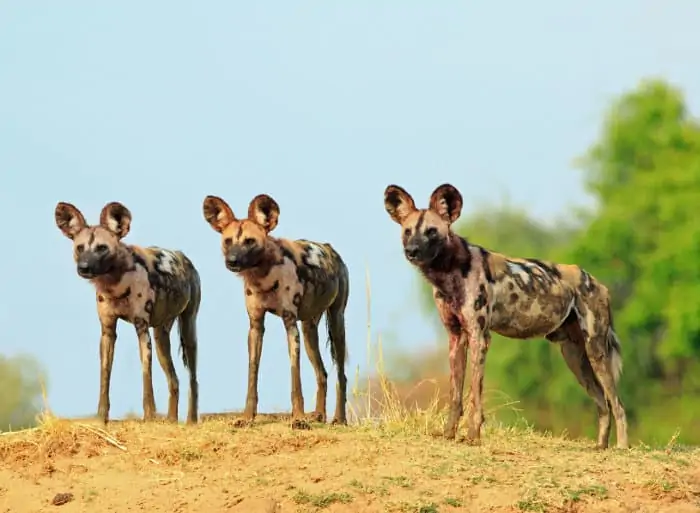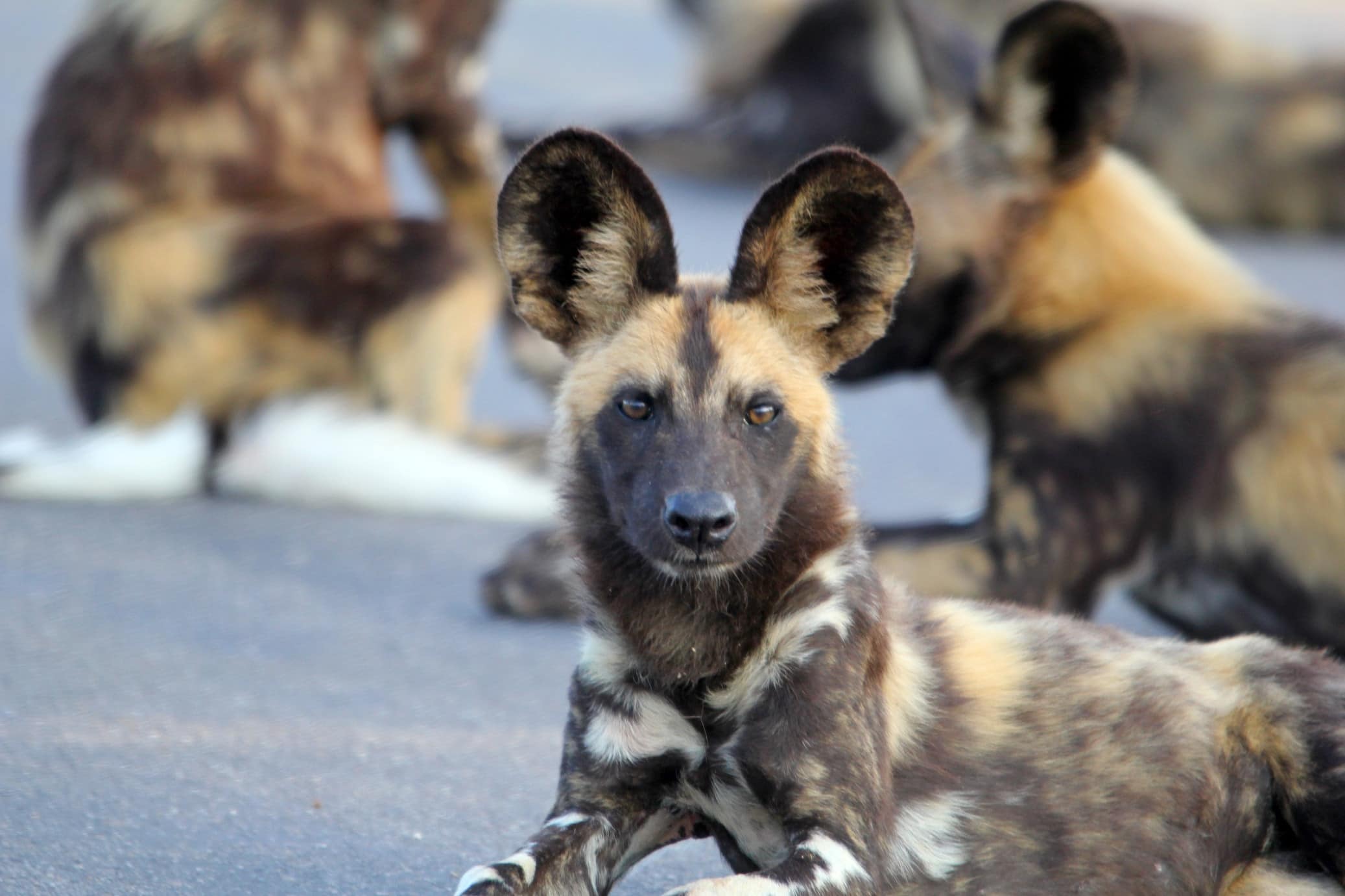
Greetings and welcome to the captivating universe of African wild dogs! This piece aims to take you on an exhilarating expedition to discover the intriguing and less-known characteristics of these extraordinary beings. Get ready to uncover some fascinating facts about these creatures, also referred to as African painted dogs or Cape hunting dogs, who are indigenous to the sprawling plains and woodlands of sub-Saharan Africa. We’ll delve into their social structure, examine their hunting techniques, appreciate their conservation status, and explore their untamed beauty in this article. So, let’s get started! First things first, what exactly is an African wild dog?

The african wild dog, also referred to as the african painted dog or cape hunting dog, is a special carnivorous species that is endemic to sub-saharan africa. Sadly, this fascinating animal is currently endangered. These creatures are well-known for their captivating coat patterns and strong social bonds within packs, as well as their impressive hunting abilities and complex social structure.
In terms of physical attributes, african wild dogs are lean and athletic with a medium-sized build. Their striking coat features black, brown, yellow, and white patches that create a one-of-a-kind mosaic design. Their large, round ears and bushy tail contribute to their excellent sensory perception, making them highly adaptable and agile in their natural habitat of the african savanna.
Overall, african wild dogs are truly unique and captivating creatures whose presence deserves to be preserved for generations to come.

The African wild dog is an indigenous species of sub-Saharan Africa that can be found in a range of different environments, from grasslands and savannas to woodlands and even mountainous regions. These fascinating creatures have been documented in a number of countries including South Africa, Zimbabwe, Namibia, Tanzania, Botswana, and Kenya. As they require large areas for hunting and sheltering, their distribution is often dictated by the availability of prey and protection from human activity. In terms of their diet, African wild dogs typically consume a variety of prey from small rodents to larger mammals.

The African wild dog is a skilled predator with a diverse diet, primarily consisting of medium-sized ungulates like impalas, gazelles, wildebeests, and other antelopes. In addition, they are known to be opportunistic hunters and may also target smaller animals such as rabbits and mice. These dogs use their patience and cooperative hunting tactics to aggressively pursue and bring down their prey. To sustain their highly active lifestyle, a balanced diet is necessary to maintain their energy levels. Lastly, do you know what a group of African wild dogs is called?

African wild dogs are fascinating and unique creatures with several interesting facts. For example, they have large, rounded ears that help them communicate with other pack members and locate prey. They also have powerful jaws that can crush bones, making it easier for them to eat their prey. Additionally, African wild dogs have a highly efficient digestive system, allowing them to digest their food quickly and efficiently. Despite being apex predators, these animals often fall prey to human-related threats such as hunting and habitat destruction. As such, it is essential to protect these incredible animals and preserve their natural habitats for future generations to enjoy.

The African wild dog, also known as Lycaon pictus, is an extraordinary and vulnerable species of carnivore found in Africa. These fascinating creatures possess remarkable traits that are sure to amaze you. One of their most noteworthy characteristics is their exceptional ability to work together as a team and communicate effectively.

The cooperative and communicative nature of african wild dogs is truly remarkable. Their exceptional teamwork and social bonds are highlighted by their coordinated hunting efforts, which rely heavily on effective communication. These beautiful animals utilize various forms of communication, including vocalizations, body language, and intricate greeting rituals, to effectively communicate within their pack. Through these methods, they ensure successful hunts and ultimately contribute to the survival of their species. It’s truly a spectacle to witness the overwhelming beauty of these creatures in action, reminding us of the incredible wonders of nature. One cannot help but be in awe of their remarkable hunting skills and admirable teamwork.
The african wild dog’s exceptional stamina is another fascinating aspect of this incredible animal. With a unique lung and heart structure that allows them to maintain high levels of endurance, they can run for long periods without tiring. This attribute is especially useful during hunts when they need to pursue their prey for extended periods to ensure a successful kill. Their impressive speed, agility and endurance make them one of the most formidable hunters in the animal kingdom, allowing them to thrive in their natural habitat. Observing these beautiful creatures in action showcases their innate abilities, leaving us in awe of their physical prowess.

The strength of African wild dogs is well-known, with their impressive endurance allowing them to chase prey for long distances. Their lean bodies, efficient respiratory system, and specialized adaptations make them true endurance athletes in the wild. One interesting fact about these dogs is their highly specialized teeth, which are perfectly adapted to their hunting and feeding habits. Their sharp incisors and canines allow them to grasp and hold prey while their carnivorous teeth easily slice through flesh and bone.
Another fascinating trait of African wild dogs is their remarkable problem-solving abilities and resourcefulness. They use their intelligence and cooperative nature to overcome obstacles such as rivers or fences. Their strong communication skills enable them to coordinate and strategize effectively, allowing them to navigate challenging terrain and thrive in various environments. Overall, the African wild dog’s cognitive abilities and survival strategies are truly impressive.